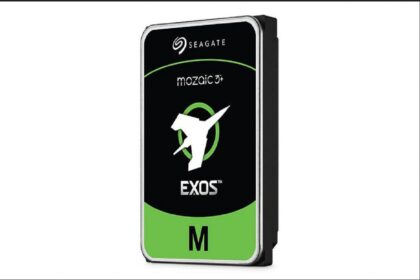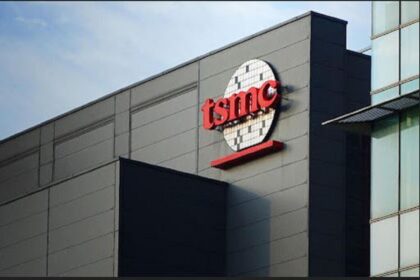The U.S. Department of Energy (DOE) is taking significant steps toward advancing semiconductor manufacturing with the establishment of the Semiconductor Manufacturing and Advanced Research with Twins USA (SMART USA) Institute. This initiative aims to bolster the competitiveness of domestic semiconductor production, focusing on the integration of digital twin technology.
What is the SMART USA Institute?
The SMART USA Institute is a collaborative effort that involves ten of the DOE’s National Laboratories. This institute is positioned as a key player in enhancing U.S. semiconductor manufacturing capabilities. The SMART USA initiative was first announced in November 2024, with the Biden-Harris Administration committing $285 million to the cause. This collaboration is expected to further integrate cutting-edge digital technologies into semiconductor development processes.
Why is the SMART USA Institute Important for U.S. Semiconductor Manufacturing?
The United States faces growing competition in semiconductor manufacturing from countries like China, Taiwan, and South Korea. To maintain its technological edge and secure national interests, the U.S. is pushing for innovations that can reduce costs, improve production efficiency, and ensure supply chain security. The SMART USA Institute will focus on these goals, specifically utilizing digital twin technology—a powerful tool for modeling and simulating manufacturing processes to optimize design, test, and production cycles.
The institute will also support the U.S. government’s broader objective of increasing semiconductor production within the country, which is vital for both national security and technological leadership.
How Will the SMART USA Institute Help the U.S. Semiconductor Industry?
The SMART USA Institute will play a pivotal role in achieving several ambitious goals for U.S. semiconductor manufacturing. These include:
- Cost Reduction: Reducing chip development and manufacturing costs by more than 35%.
- Faster Development: Cutting semiconductor development cycle times by 30%.
- Environmental Benefits: Reducing the greenhouse gas emissions associated with semiconductor production by 25%.
- Workforce Training: Training over 100,000 workers on the use of digital twin technology, a crucial skill for the future of manufacturing.
By addressing these key areas, SMART USA aims to make the U.S. semiconductor sector more competitive, efficient, and sustainable.
Which National Laboratories Are Involved in the SMART USA Institute?
The collaboration spans ten prestigious DOE National Laboratories, each bringing its unique strengths to the project. These laboratories include:
- Argonne National Laboratory
- Brookhaven National Laboratory
- Fermi National Accelerator Laboratory
- Idaho National Laboratory (which will serve as the project’s Chief Digital Officer)
- National Renewable Energy Laboratory
- Oak Ridge National Laboratory
- Pacific Northwest National Laboratory
- Princeton Plasma Physics Laboratory
- Sandia National Laboratories
- SLAC National Accelerator Laboratory
Each of these laboratories has a strong track record in advanced research, from energy systems to computational models, and will contribute to various aspects of semiconductor manufacturing.
The Role of Digital Twin Technology in Semiconductor Manufacturing
A core component of the SMART USA Institute’s approach is digital twin technology. Digital twins are virtual replicas of physical systems or processes, enabling researchers to simulate and optimize manufacturing steps before implementation. By adopting this technology, the semiconductor industry can achieve higher precision in production, reduce waste, and streamline development timelines.
The technology is also pivotal for creating more energy-efficient semiconductor manufacturing processes, aligning with the goal of reducing emissions by 25%. In an industry where even small efficiencies can lead to significant cost savings, digital twins offer a transformative advantage.
How Will SMART USA Help U.S. Workers and Education?
In addition to technological advancements, SMART USA is committed to addressing the workforce challenges facing the semiconductor industry. As the demand for highly skilled workers increases, the institute will focus on training more than 100,000 workers in digital twin technology, equipping them with the expertise required to thrive in this evolving field.
This workforce development initiative will not only provide U.S. workers with access to high-tech jobs but also support the broader objective of maintaining U.S. leadership in critical technologies.
A Collaborative Effort for National Security
The establishment of the SMART USA Institute is a significant step in the U.S. government’s strategy to improve semiconductor production domestically, ensuring a secure supply chain for critical components. According to Jennifer M. Granholm, the outgoing U.S. Secretary of Energy, the DOE and its National Labs have been at the forefront of AI research, and this initiative represents a further expansion of their role in advancing domestic manufacturing capacity and enhancing national security.
The SMART USA Institute reflects the Biden-Harris Administration’s goal to foster collaboration across government agencies, the scientific community, and private industry to strengthen U.S. manufacturing capabilities.
Frequently Asked Questions (FAQs)
What is digital twin technology, and why is it important for semiconductor manufacturing?
Digital twin technology involves creating virtual models of physical systems, which can be used to simulate, analyze, and optimize manufacturing processes. In semiconductor manufacturing, digital twins enable more efficient production, reducing costs and improving quality control.
How will SMART USA reduce the cost of semiconductor manufacturing?
By implementing digital twin technology, the SMART USA Institute aims to streamline production cycles and reduce waste, which can lead to significant cost savings. The goal is to lower chip development and manufacturing costs by more than 35%.
What impact will SMART USA have on the environment?
SMART USA is committed to reducing greenhouse gas emissions associated with semiconductor manufacturing by 25% through improved energy efficiency and optimized manufacturing processes.
How will SMART USA contribute to the U.S. workforce?
The institute plans to train over 100,000 workers on digital twin technology, ensuring that the U.S. workforce is equipped with the skills needed to thrive in the evolving semiconductor industry.
What are the long-term goals of SMART USA?
SMART USA aims to reduce semiconductor development cycle times by 30%, lower manufacturing costs, and contribute to the environmental sustainability of the semiconductor industry while ensuring U.S. leadership in global manufacturing.

















